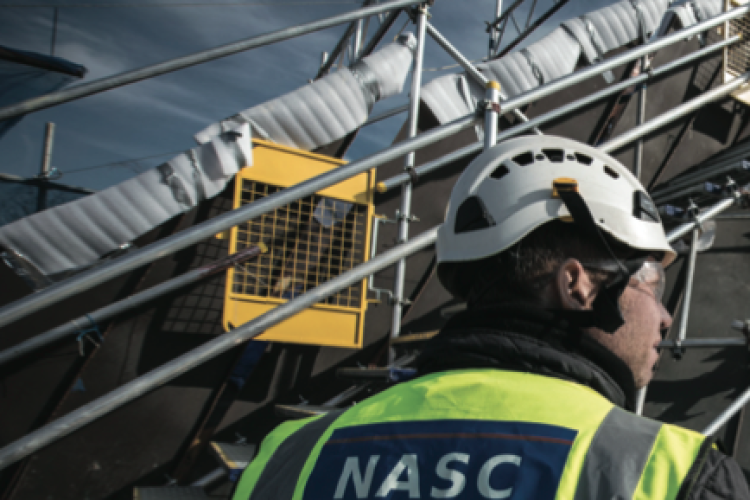It’s been a while in coming, but the National Access & Scaffolding Confederation’s new technical guidance has been hailed as a ‘step change’ that will drive up standards for access firms, enhance site safety and dramatically speed up the design process for the most common temporary structures.
Crucially, TG20:13 Guidance for tube and fitting scaffolding includes a software package that can generate generic designs that automatically comply with European Standard BS EN 12811.
This is radical departure from the old ways of working and is expected to slash design costs. Until now, engineers have had to carry out lengthy calculations to demonstrate the safety and stability of most temporary structures, creating bespoke designs with every new project.
The NASC estimates that the TG20:13 software, which can be used on a laptop or a tablet, will cater for 80% of tube and fitting designs commonly used on site, including independent structures, birdcages, loading bays, towers and chimney scaffolds. Options are included for elements such as bridges, protection fans and inside board brackets, cantilevered platforms and pavement lifts. Guidance for structural transom units has also been added for the first time.
The TG20:13 software also issues compliance forms, and enables designs to be quickly circulated via email between parties. “This digital [element] brings the NASC in step with principal contractors who are embracing building information modelling,” says NASC managing director Robin James.
He adds that the NASC partnered with software specialist CADS to develop the new guidance over a period of two and a half years, investing more than £500,000 into the project which required “intensive” computerised structural modelling.
One handy feature in the e-package is a digital windmap: contractors merely have to enter a postcode to pull up calculations of wind exposure on their proposed site.

The guidance was launched this February, just a few months later than anticipated, but was described as “worth the wait” by NASC president Kevin Ward.
“TG13 is not a rewrite, it is a completely new suite of documents [which] sees a step change in our industry with regard to the design of tube and fitting scaffolds.
“In the future our clients will be expecting either a site specific TG20:13 compliance sheet, or a full temporary works scaffold design to be submitted as part of the scaffold plan. The HSE will also be looking for this.”
As well as being backed by the HSE, the guidance is supported by the UK Contractors Group.
Stephen Ratcliffe, director the UKCG said: “We applaud and support the work of the NASC which will no doubt result in safer scaffolding structures being installed, and thus reduce the frequency of scaffolding failures, which at present occur far too frequently across the industry.
“The UKCG recommends the adoption and standardised use of TG20:13 to the wider industries that utilise scaffolding both within and outside the construction sector.”
Got a story? Email news@theconstructionindex.co.uk



